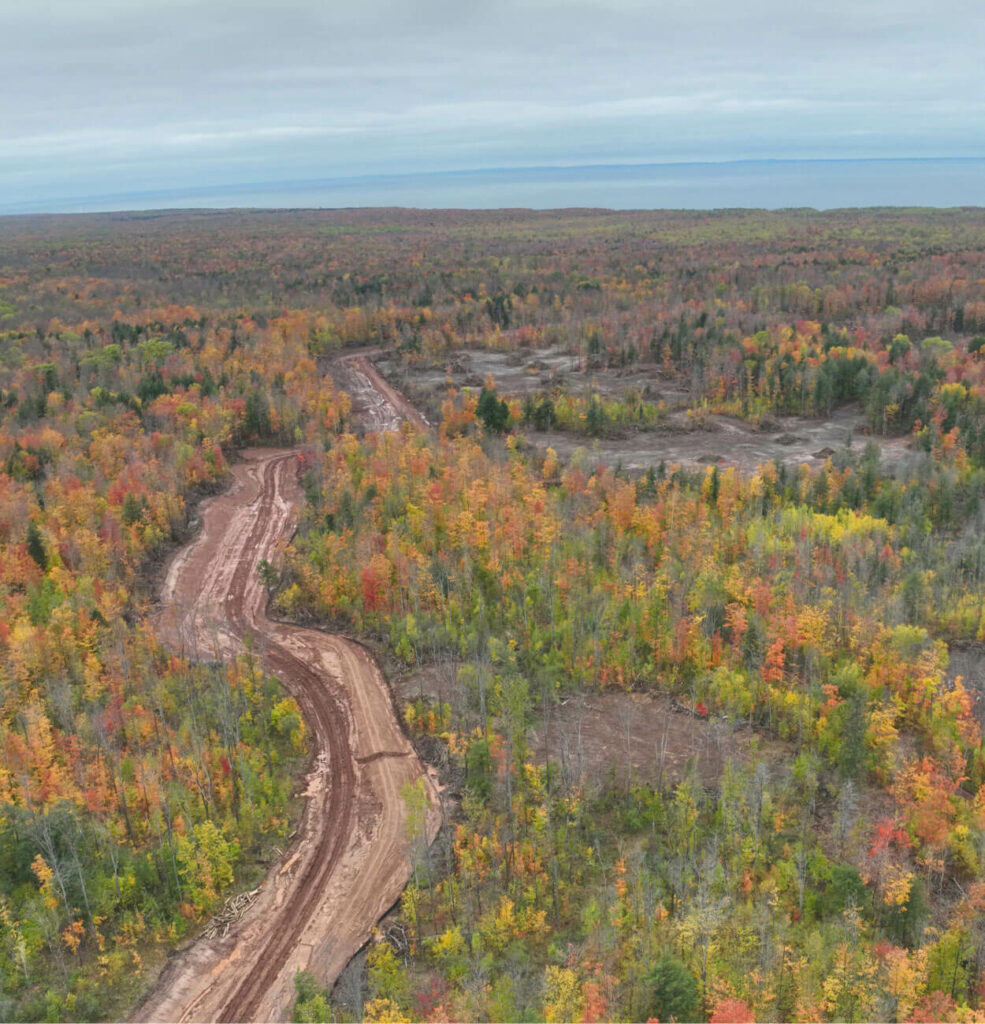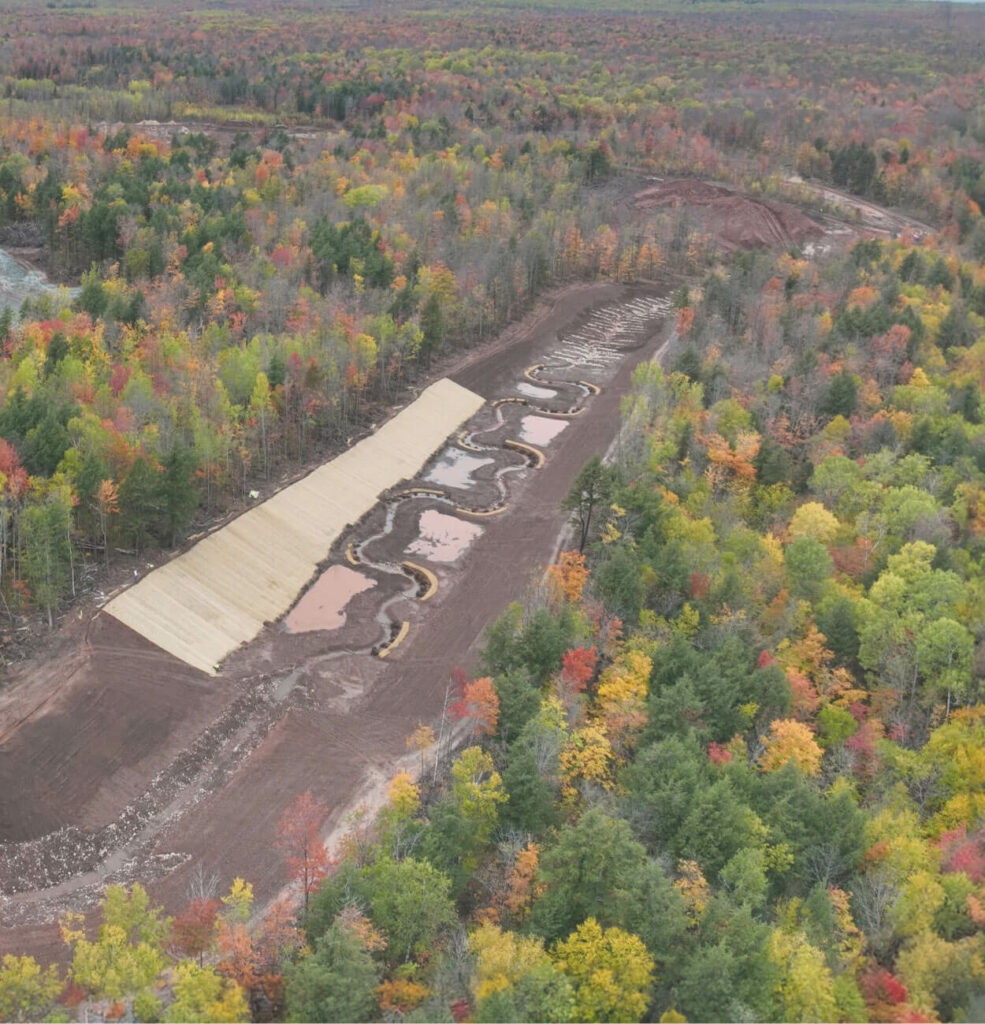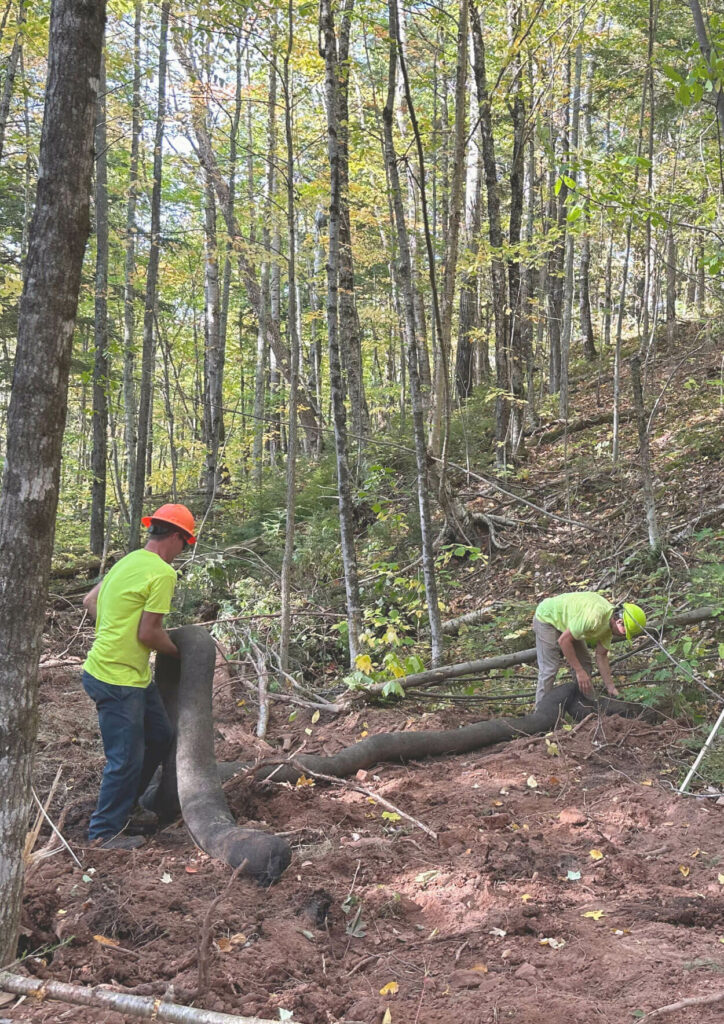Fully Permitted Project
The project has obtained all required permits and is ready to move into construction (pending construction decision and project financing).

The Copperwood Project is a wholly owned greenfield copper project being developed by (and to be operated by) Highland Copper’s U.S. subsidiary Copperwood Resources Inc. It is a lower capital intensity project with a projected 10.7-year mine life that can rapidly reach commercial production, making it an ideal first project for the company.
The project property is located on the Western Upper Peninsula of Michigan, approximately 14 miles (22.5 kilometers) north of Wakefield. The project area is at the south edge of the Keweenaw Copper province and underlain by clastic sediments of the Oronto Group, including the Copper Harbor, Nonesuch and Freda Formations.
The underground mine will be developed using the room-and-pillar mining method with an estimated average processing rate of 6,800 metric tonnes per day. Facilities on site will include grinding, flotation, concentrate thickening, concentrate filtration, storage, and loadout.
Site preparation was initiated in 2023 and will continue in 2024. In parallel, technical studies are underway to review value-optimization opportunities identified in the Feasibility Study.
The project has obtained all required permits and is ready to move into construction (pending construction decision and project financing).
The project has received resolutions of support from all townships within Gogebic County and multiple neighboring communities.
The project’s Current Feasibility Study (updated in 2023) demonstrates a modest initial capital requirement with a clear path to production.

Opportunities to increase project value include:

The 2023 Feasibility Study update was completed by, and under the supervision of, G Mining Services Inc. in collaboration with Foth Infrastructure and Environment, LLC. The study provides a comprehensive overview of the Copperwood Project and defines an economically feasible, technically and environmentally sound project.
After-tax internal rate of return (“IRR”) of 17.6% with Net Present Value (8% Discount Rate) of $222 million before taxes and $168 million after taxes.
Initial capital expenditures of $391 million, net of pre-production revenue of $34 million.
Life-of-mine (“LOM”) cash costs of $1.83/lb, and $1.55/lb (including royalties) in the first five years of production.
Average annual LOM payable copper production of 64.6 M lb and 106,966 ounces of silver.
Proven and Probable Reserves of 25.7 million tonnes (“M t”) @ 1.45% Cu and 3.91 g/t Ag, containing 820 million pounds (“M lb”) of copper and 3.2 million ounces of silver.
Additional Mineral Resources of 79.1 Mt @ 1.09 % Cu and 3.6 g/t Ag in the Inferred category, containing 1.9 billion pounds (“B lb”) of copper and 9.0 million ounces (“M oz”) of silver using a 0.9% Cu cut-off.
For information on the Copperwood project’s resource and reserve estimate, download the slides from our corporate presentation deck.